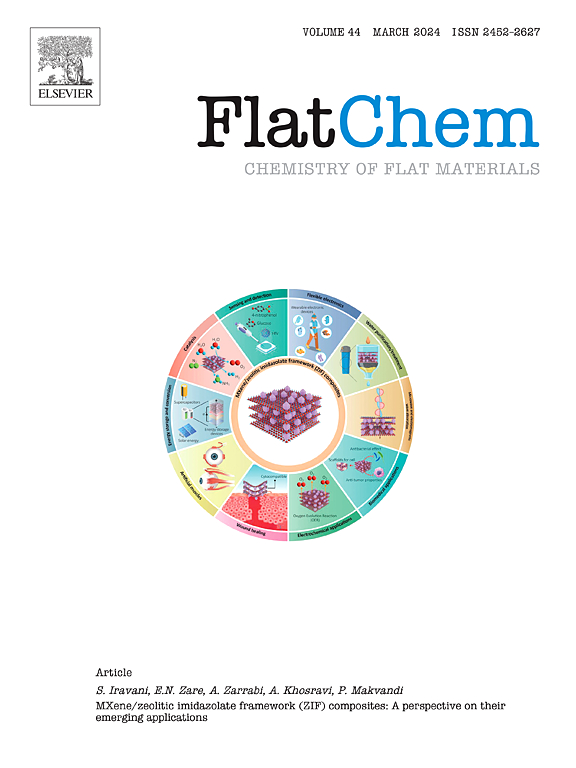掺杂杂原子的石墨烯:从制造到超级电容器和电池储能应用
IF 5.9
3区 材料科学
Q2 CHEMISTRY, PHYSICAL
引用次数: 0
摘要
尽管石墨烯具有特殊的性能,但需要对其表面和结构进行一定的修改才能提高其在储能应用中的性能。掺杂剂的引入可以产生电荷载体,从而提高石墨烯的导电性和整体性能。然而,仔细控制掺杂浓度是至关重要的,因为过量的掺杂会导致形成阻碍电子迁移的缺陷。本文综述了石墨烯的功能化、掺杂剂的选择标准、杂原子掺杂石墨烯的制备技术以及掺杂石墨烯系统的储能应用。掺杂剂的选择是决定掺杂石墨烯应用前景的重要因素。各种合成方法,包括化学气相沉积(CVD),溶剂热,水热,球磨,电化学合成,热退火,等离子体合成和电弧放电,已经探索了制备杂原子掺杂石墨烯的方法。每种技术都有其独特的优势和挑战,从而影响材料的可扩展性,成本和性能。例如,溶剂热法和水热法可以生产可扩展且具有成本效益的材料,而球磨和电化学合成路线则简单且操作成本低。CVD技术虽然具有一定的优势,但由于其机理复杂,在大规模生产中面临着挑战。等离子体合成具有可调性和环境效益,但存在高温问题。热退火法和电弧放电法是高效的生产方法,但它们需要分别对温度和电流进行彻底的优化。因此,本综述提供了简明的证据,并对制备用于超级电容器和锂离子电池储能应用的杂原子掺杂石墨烯进行了全面的研究。水热和溶剂热合成方法在生产可持续的杂原子掺杂石墨烯储能应用中显示出很高的可能性。该综述进一步证实了杂原子掺杂石墨烯具有电解质离子扩散快、孔隙度紧凑、高电容和长循环寿命等优点,可用于生产商用超级电容器、锂离子和钠离子电池电极。本文章由计算机程序翻译,如有差异,请以英文原文为准。

Heteroatom-doped graphene: From fabrication to supercapacitor and batteries energy storage applications
Graphene, despite its exceptional properties, requires certain surface and structural modifications to enhance its performance in energy storage applications. The introduction of dopants can create charge carriers that can improve electrical conductivity and the overall properties of graphene. However, careful control over dopant concentration is crucial since excessive doping can lead to the formation of defects that can hinder electron mobility. This review discussed the functionalization of graphene, dopant selection criteria, heteroatom-doped graphene preparation techniques, and the energy storage applications of the doped graphene system. Dopant selection is very important as it determines the applications of the doped graphene. Various synthesis methods, including chemical vapor deposition (CVD), solvothermal, hydrothermal, ball milling, electrochemical synthesis, thermal annealing, plasma synthesis, and arc discharge, have been explored for the fabrication of heteroatom-doped graphene. Each technique presents its distinct advantages and challenges, thereby influencing the materials scalability, cost, and properties. For instance, solvothermal and hydrothermal methods can produce scalable and cost-effective materials, while ball-milling and the electrochemical synthesis routes offer simplicity and low operational costs. The CVD technique, while advantageous, faces challenges in large-scale production, due to some complex mechanisms. Plasma synthesis provides tunability and environmental benefits but suffers from high-temperature issues. The thermal annealing and the arc discharge methods offer efficient production, but they require thorough optimization of temperature and current, respectively. Therefore, this review provides concise evidence and a thorough examination of the production of heteroatom-doped graphene for supercapacitor and lithium-ion batteries energy storage applications. Hydrothermal and solvothermal synthesis methods have shown high possibilities in the production of sustainable heteroatom-doped graphene for energy storage applications. The review further confirms the possibility for the use of heteroatom-doped graphene, with its fast electrolyte ion diffusion, compact porosity, high capacitance, and long cycle life, in the production of commercial supercapacitor, lithium-ion and sodium-ion batteries electrodes.
求助全文
通过发布文献求助,成功后即可免费获取论文全文。
去求助
来源期刊

FlatChem
Multiple-
CiteScore
8.40
自引率
6.50%
发文量
104
审稿时长
26 days
期刊介绍:
FlatChem - Chemistry of Flat Materials, a new voice in the community, publishes original and significant, cutting-edge research related to the chemistry of graphene and related 2D & layered materials. The overall aim of the journal is to combine the chemistry and applications of these materials, where the submission of communications, full papers, and concepts should contain chemistry in a materials context, which can be both experimental and/or theoretical. In addition to original research articles, FlatChem also offers reviews, minireviews, highlights and perspectives on the future of this research area with the scientific leaders in fields related to Flat Materials. Topics of interest include, but are not limited to, the following: -Design, synthesis, applications and investigation of graphene, graphene related materials and other 2D & layered materials (for example Silicene, Germanene, Phosphorene, MXenes, Boron nitride, Transition metal dichalcogenides) -Characterization of these materials using all forms of spectroscopy and microscopy techniques -Chemical modification or functionalization and dispersion of these materials, as well as interactions with other materials -Exploring the surface chemistry of these materials for applications in: Sensors or detectors in electrochemical/Lab on a Chip devices, Composite materials, Membranes, Environment technology, Catalysis for energy storage and conversion (for example fuel cells, supercapacitors, batteries, hydrogen storage), Biomedical technology (drug delivery, biosensing, bioimaging)
 求助内容:
求助内容: 应助结果提醒方式:
应助结果提醒方式:


